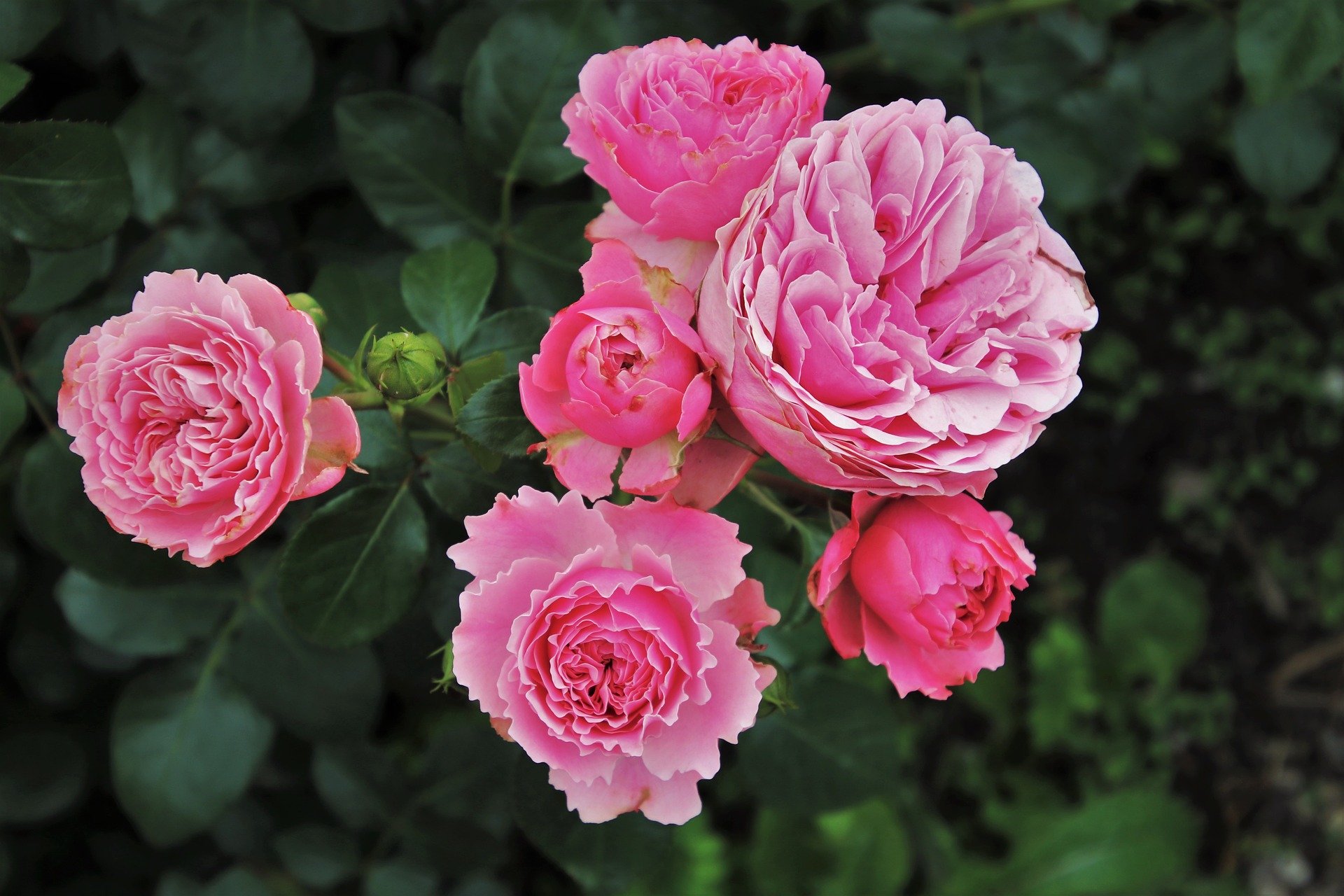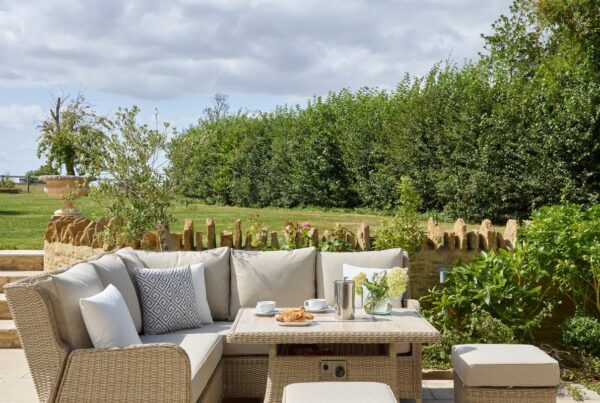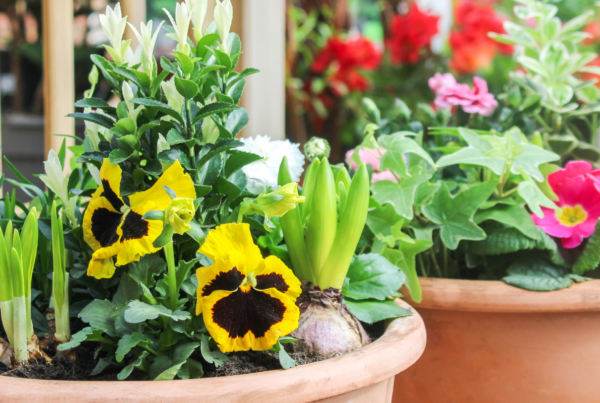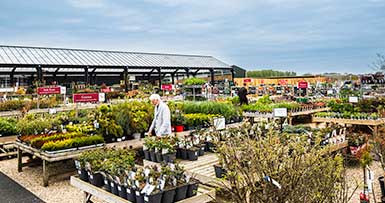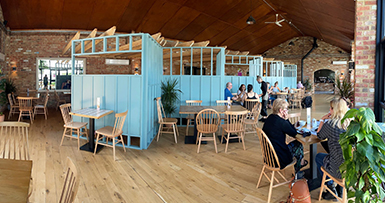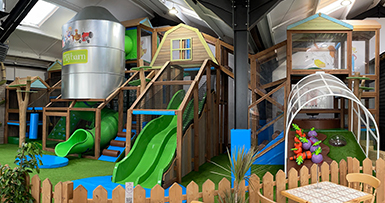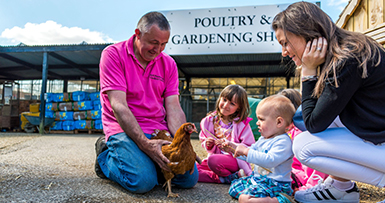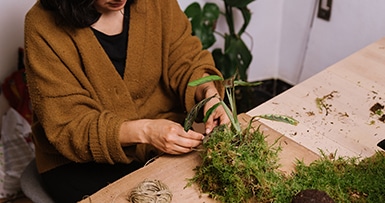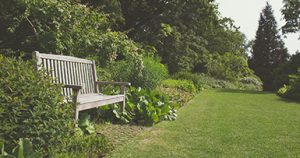Roses are a beautiful addition to any garden. Whether your’re going for the full, quintessentially English Rose Garden, or you just want one or two, there is a variety that will suit your needs, providing colour, and in many cases divine fragrance.
Read on for planting and aftercare advice, and to see just a sample of the beautiful varieties we have in stock.
Planting and caring for pot-grown roses
Planting
Pot-grown roses can be planted at any time of the year, providing the ground is not frozen or very dry.
In the main, roses thrive on direct sunlight, so try to pick a spot that gets at least 4 hours a day. (Roses can also be planted against a north facing wall – for advice on roses for shaded areas, please call us). Try to avoid very exposed or windy sites and avoid planting your rose under overhanging tree branches.
1. Before planting, water your rose well – until the water runs out of the bottom of the pot
2. Prune off any damaged stems, flowers or buds
3. Dig a hole approximately twice the width of the plant’s roots and a little bit deeper
4. Loosen up the soil in the bottom of the hole and add some organic matter such as well-rotted manure or compost, and fork into the existing soil
5. Carefully remove your rose from its pot by tapping and gently squeezing the pot. Then tease out the roots to encourage them to extend outwards. Rub mycorrhizal fungi on to the rootball, and spread a layer in the hole, to further encourage root growth.
6. Centre the rose in the hole and reposition until you are happy that it is in the right place.
7. Use a small cane to lay across the top of the soil from the pot so that you know where to back fill to (ensure that the point from which the stems grow is at soil level and not below)
8. Fill the hole with the soil you have dug out mixed with some more organic matter
9. Water well
10. If you are planting more than one rose in a bed, check the label for details on the spacing they need between them.
N.b.: If you are replacing an old rose with the new one, dig the hole out bigger and replace the soil with some from a different part of the garden to avoid replant disease/soil sickness. Mycorrhizal fungi will also help with this.
 Pruning
Pruning
Prune new roses back in the later winter or early spring after you planted them. Remove dead, damaged or weak growth first. Pruning then differs depending on the type of rose it is:
Shrub/Species Roses: Leave the remaining stems unpruned
Floribunda (cluster-flowered) Roses: Prune the remaining stems back to about 6â€/15cm from the ground
Hybrid Tea Roses: Prune the remaining stems back to 4-6â€/10-15cm from the ground
Rambling and Climbing Roses: Prune remaining stems back to 12-15â€/30-40cm from the ground if they’ve not already been pruned back at the garden centre
Ongoing care
Watering: For the first two years after planting, water well during dry spells
Feeding: Apply Top Rose fertiliser, Tomorite or Miracle Grow during flowering. If growth slows this can be repeated mid-summer
Mulching: After feeding, mulch with manure, compost or bark chippings. Leave at 10cm gap between the mulch and the stems.
Disease: Roses can suffer from a range of common diseases including blackspot, dieback, mildew and rust spots, as well as pests such as black fly and greenfly. If any of these occur, call in to the garden centre for advise on the best way to treat them.
We have an extensive selection of David Austin and Wharton Nurseries Roses in stock, ready for you to take home. Below are just some of the beautiful varieties we have currently.


